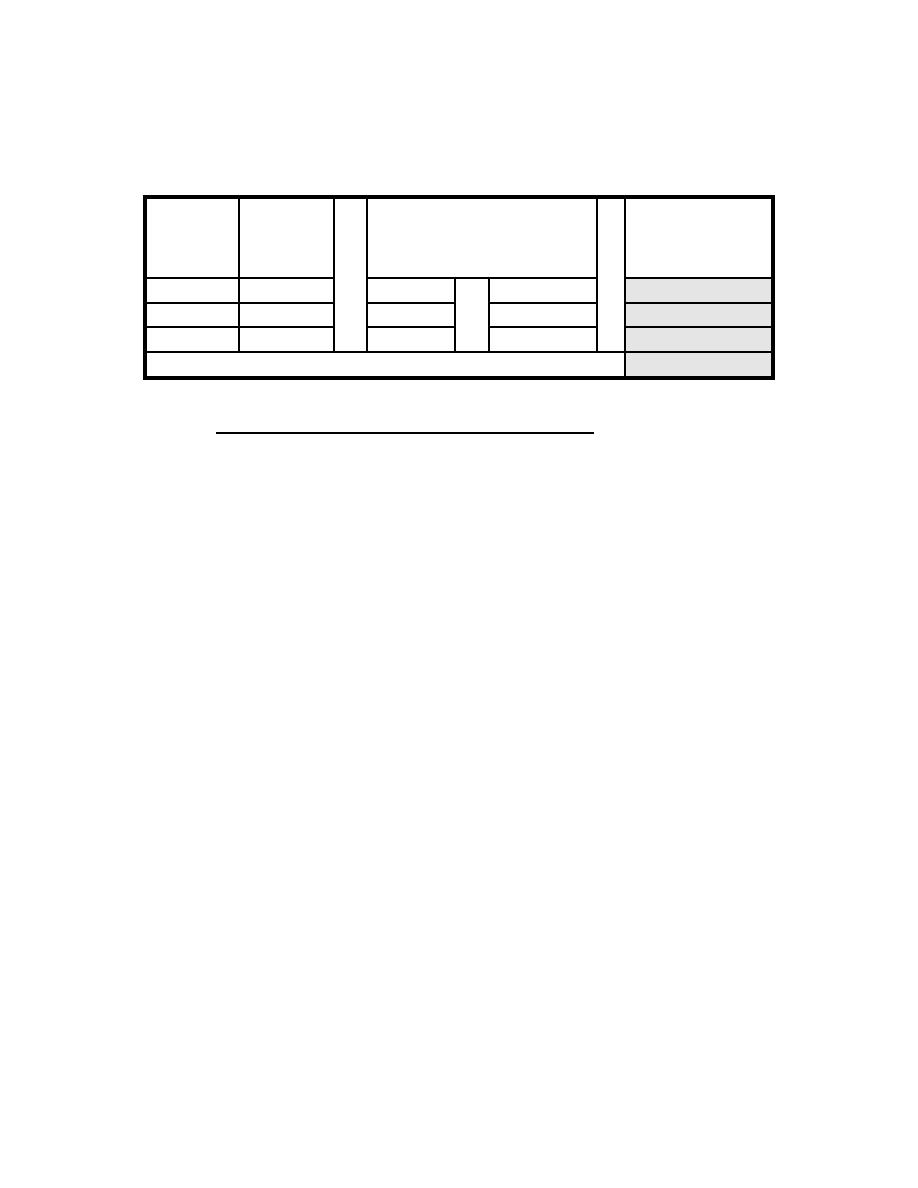
MIL-HDBK-1133
Table 16
Ship Nonelectric Use Adjustment
Ship
Adj.
*
Ship
*
Connect
=
Ship Steam
Class/
Factor
Steam
Hours
Consumption,
Name
Load
(same as
kBtu
Elec.)
CG-16
0.866
4.4
30
114
DD-931
0.866
2.7
10
23
CVN-68
0.866
20.1
40
696
TOTAL
834
3.3
Supplemental Reconciliation Process. In many cases,
nonbuilding loads such as street lights or water and sewer energy
are distributed among tenant organizations. Many installations
have methods for assigning this energy use. If a method is
ineffective or nonexistent, a supplemental reconciliation can be
completed. This reconciliation is similar to the process
described above but allocates the nonbuilding loads to the
appropriate energy use components. The energy components may
include metered and nonmetered buildings and/or ships.
This reconciliation is completed using the following
steps:
a) Start with the initial final reconciliation
completed above in Table 11 and remove from the table any
nonbuilding loads that are to be apportioned to other tenants.
b) Recalculate the reconciliation. The difference
should be equal to the sum of the values removed.
c) Create a new adjustment factor by dividing the
difference by the sum of the energy use components to which the
difference is to be apportioned.
d) Apply the new adjustment factor to the individual
building estimates within the energy use components used to
derive the adjustment factor (similar to Steps (h) and (i)
above). This allocates the energy difference proportionally to
each of the estimated values. The result of this process is
building or ship consumption values that include a proportional
amount of shared nonbuilding energy use. As a check of the
process, the revised estimates should be re-inserted in the
original reconciliation to ensure that the totals now match.
37



 Previous Page
Previous Page
